Contamination or not: non contamination issues and the most common contaminants in mushroom cultivation
The short overview of the most common contamination and cultivation problems for fast identification. Each problem and contamination has a detailed guide with recommendations on how deal with contamination and how to prevent contam for the future.
This page is under continuous update. Stay tuned!
🔴 Growing issues guides: Growing Troubleshooting
🔴 Contamination photos: Contamination photo collection
🔴 Non contam photos: Growing problems photo collection
TOP non Contamination problems in mushroom cultivation
Common mushroom cultivation problems, when mycelium and mushrooms are not contaminated by fungi molds, bacteria, viruses
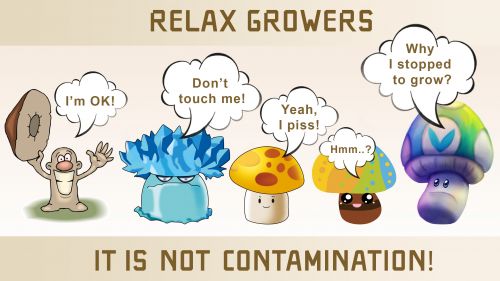
1. Overlay and Stroma
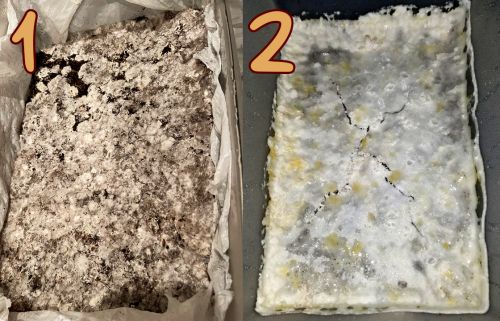
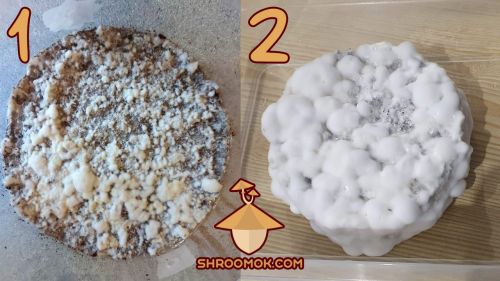
If mycelium became cottony, fluffy, crust-like or matted. No pins at all!
❓Is it contamination or not?
❓What are Stroma and Overlay?
❓How to identify?
❓What are the main causes of overlay?
❓How to fix it and initiate pin setting?
Overlay (aka stroma) is a dense mycelial growth that covers casing layer, and shows little or no inclination to form pinheads and eventually mushrooms.
🔴 Bad News: problems with growing conditions and pinhead initiation. You can lose all possible harvest.
❇️ Good News: overlay is not contamination. There is chance to fix the problem
🔴 Check out details: Overlay and Stroma in Mushroom Cultivation
2. Mycelium Bruising and Mushroom Bruises
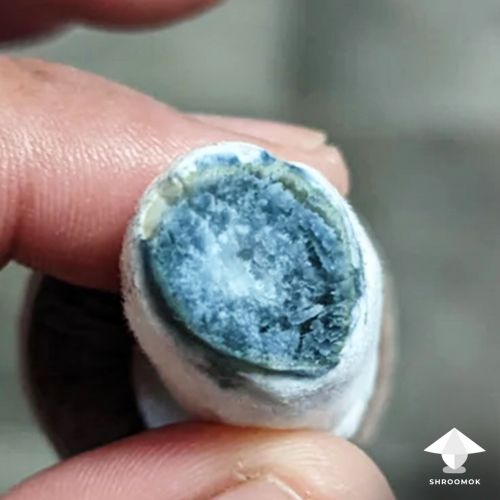
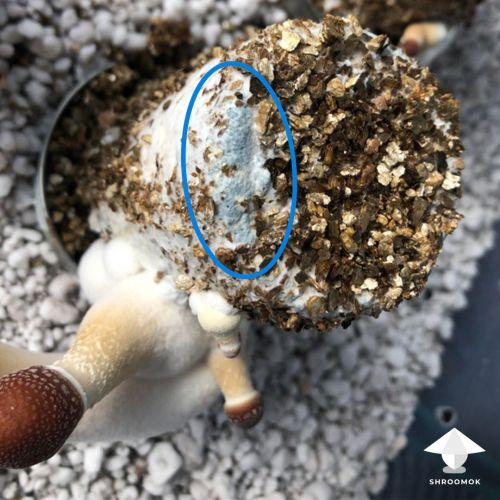
❓Why magic mushrooms turned blue and bruised?
❓Is it contamination?
❓Is bruised mycelium and fruit bodies bad during growth?
❓How to avoid and what to do with bruising?
❓Bruises or Mold? How to find the difference?
Bruising is the reaction between psilocyn and oxygen. It’s not contamination! Such mushroom reactions could appear on mycelium and on fruit bodies. Blue color, blue-green or even black bruises is one of the signs of psilocybin mushrooms.
Bruising is a result of mechanical impact, when cell walls of mycelium or mushroom tissue are damaged. It can influence mushroom development.
Bruised mushrooms right harvesting is absolutely normal!
Mycelium bruises usually confused with green mold Trichoderma and blue-green mold Penicillium
🔴 Check out details: Mycelium Bruises or Mold Contamination
3. Mushroom Aborts
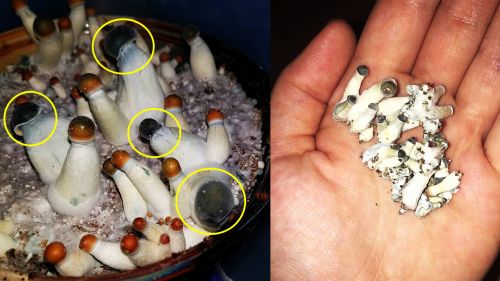
If mushroom caps turned black and shrooms stop growing
🆘 Why mushroom caps turned black?
🆘 Why mushrooms stop growing?
🆘 Is it contamination?
🆘 Are they safe to consume?
☝️Mushroom aborts are primordia or small mushrooms that stop their development. These shrooms never become full-grown and never produce spores.
A distinctive feature of mushroom aborts are totally black caps or dark-blue caps.
Abortions are NOT contamination!
Moreover, such aborted shrooms are usually more potent than mature mushrooms. Take it into account!
🔴 All about aborted shrooms: Mushroom aborts
4. Fuzzy feet, white dots on mushroom caps and long stems
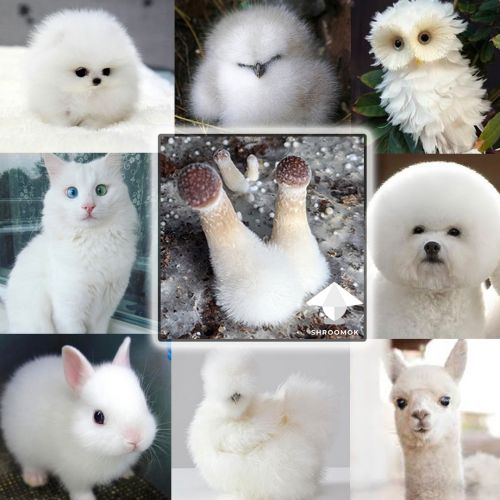
If you find fluffy base of stems, white dots on mushroom caps or your mushrooms have long stems and small cap
🔴 Check out for more details and examples: Why Mushrooms too Leggy, Fuzzy Feet and White Dots on Caps
5. Strange dark spots on mushrooms and mycelium
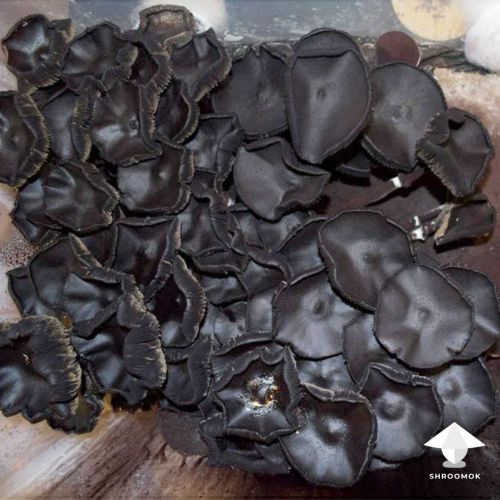
Strange black spots suddenly appeared on mushroom caps and mycelium. Why is this happening? Is it contamination or not? Is it safe to take such mushrooms?
🔴 Check out details and examples: Black spots on Mushrooms and Mycelium
6. Mycelium Metabolites or Mushroom Pee
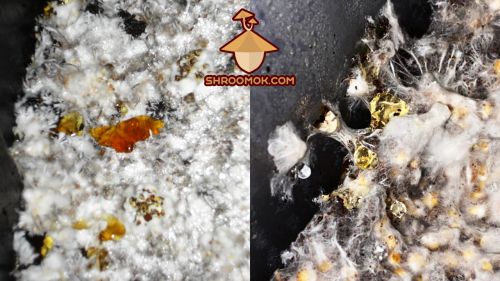
🆘 Help! A strange yellow liquid appear on the mushroom mycelium
🆘 Why mycelium turned yellow?
🆘 Is it contamination? What to do?
Mycelium pigmentation, transparent yellow liquid without odors is secondary metabolites (aka mushroom exudate, mushroom urea, mushroom piss). It is a waste product of fungal metabolism
🔬 Biochemical analyses of the exudates showed that acid phosphatase, β-glucosidase, acid and alkaline protease, RNase polygalacturonase and cellulase enzymes as well as oxalic acid and ammonia were present.
It is not contamination! Metabolites are natural immune response of the mycelium to stress or pathogens (especially bacteria)
Newbie cultivators often confuse secondary Metabolites with Mycogon (aka Wet Bubble) contamination or with Aspergillus yellow spp. (Aspergillus flavus).
🔴 Let’s figure out in the section: Mycelium metabolites or mushroom pee
7. Cracked & split caps and stems
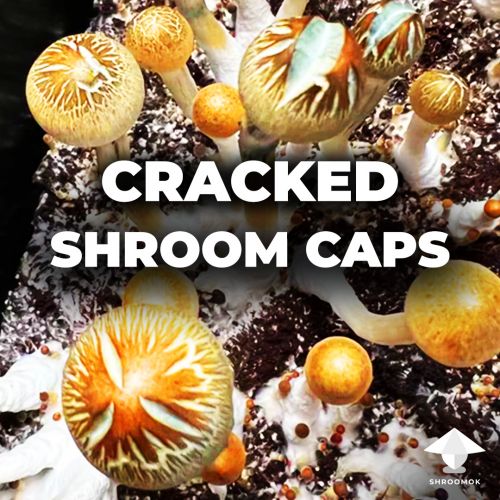
A split or cracked mushroom caps and stems are neither contamination nor a disease in this case. These symptoms indicate dehydration or imbalanced parameters in the fruiting chamber, which can be fixed. It can also be a genetic mutation that cannot be fixed
🔴 Details and examples: Mushroom caps splitting and cracking issue
TOP Contamination in mushroom growing
1. Green mold aka Trichoderma contamination
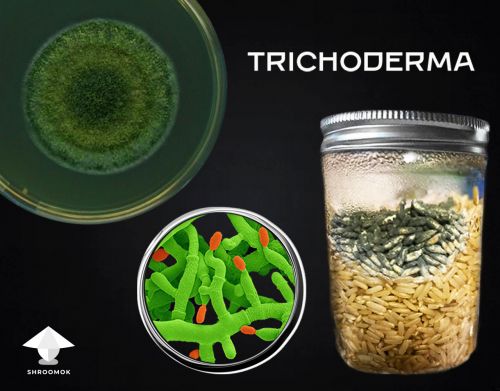
I have a lot to say about Green Mold contamination: about identification, preventive measures, about additives for prevention, about Lime and Gypsum, what to do with contaminated mushroom cake and many many more...
I wanted to share a brief overview, however I have long read for you with details and many photo examples. Hope you’ll find useful insights here
🔴 All about Trich contam: Green mold contamination aka Trichoderma
2. Cobweb Mold contamination
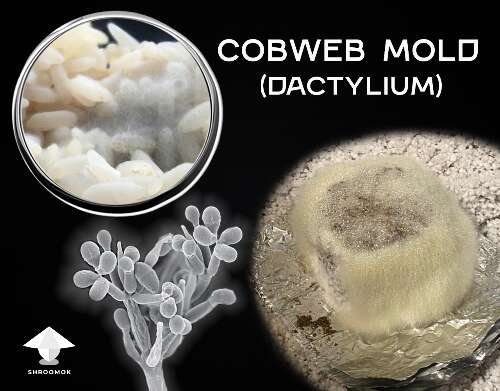
Cobweb is a common fungal disease of commercially and home cultivated mushrooms. It is caused by mold pathogens: Dactylium spp., Cladobotryum spp., Hypomyces spp. etc.
It is fast growing thin greyish mold that can appear on mushroom cake or spawn.
We remember the best and most common advice for treatment any kind of mold is «Throw it away immediately!»
But good news give us hope!
❇️ Actually, cobweb is considered a treatable disease. It is one of the few molds which can be slowed down or even destroyed with 3% hydrogen peroxide solution or salt application
❓How to identify cobweb contamination?
❓Cobweb or mushroom mycelium?
❓Preventative measures of cobweb disease
❓Cobweb mold treatment guide
🔴 Check out details: How to identify and get rid of Cobweb Mold
3. Wet bubble disease aka Mycogone contamination
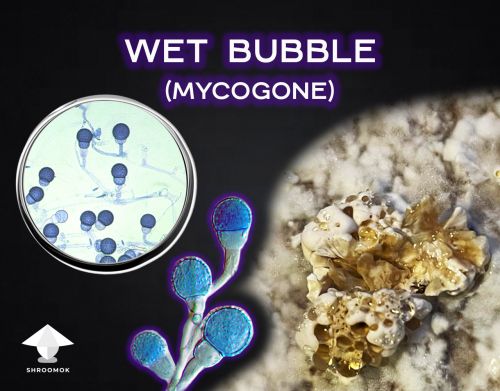
Wet Bubble is a fungal disease caused by parasitic pathogen Mycogone perniciosa, that usually affected pinheads and mushrooms. It has a few often used names: mycogone, wet bubble, white mushroom mold, vesicular disease, La Mole.
The main features of mycogone contam are shapeless masses, fluffy blobs of mycelium ooze with amber yellow orange brown liquid. For newbie growers such symptoms easy to confuse with secondary metabolites.
❓How to identify Mycogone?
❓How to recognize whether it's mycogone or mycelium piss?
❓ Main causes of mycogone contam and how to prevent wet bubble?
❓ Is it possible to treat wet bubble disease?
🔴 Check out details: Mycogone contamination aka wet bubble disease
If you find my work helpful 🍄 Buy Shroomok a mushroom as a donation and say something nice!
Have a happy growing and healthy shrooms!
To be continued...


Comments
Add comment